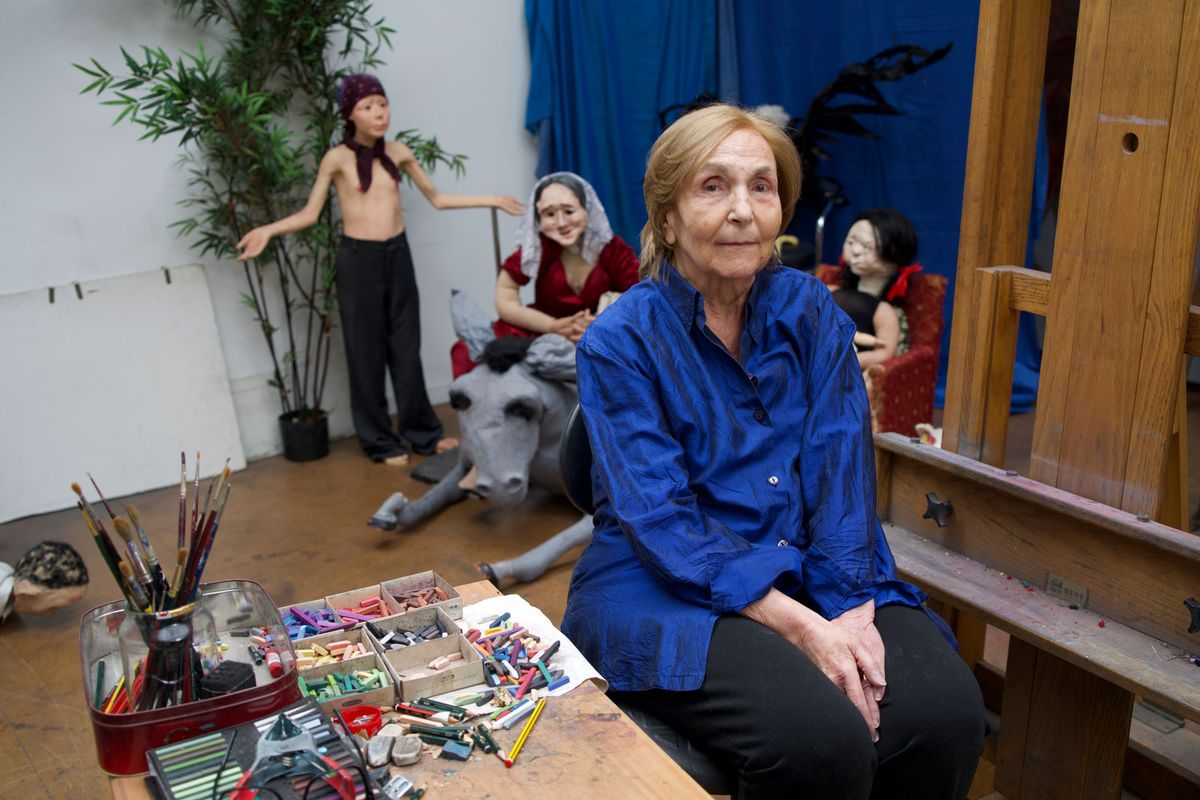The Portuguese artist Paula Rego rarely makes self-portraits, preferring to express herself through images of others, most notably her long-time assistant and model Lila Nunes. But after a fall in 2017, Rego created a series of unsparing pastel drawings of her bruised face, which feature in a new book that accompanying the artist's recent show at London’s Victoria Miro gallery. “The mouth in Rego’s self-portraits is a whole landscape in itself, an abundance of life rendered in a few delicate lines,” writes the novelist Deborah Levy in the publication. “There is a sense of almost demonic possession in the one open eye that stares at herself. Perhaps it is the force of her desire to create art.”
As well as Levy’s essay, the book also includes a series of short interviews with Rego conducted by other artists. Below is a small selection of these, giving a unique insight into Rego’s thoughts about her work.

Paula Rego's Self-Portrait III (2017) © Paula Rego; Courtesy the artist and Victoria Miro
Kudzanai-Violet Hwami: You have never shied away from speaking about difficult themes in your work, and are very uncompromising in your approach to making paintings. I’m curious about your thoughts on self-censorship as an artist working today. Are there strategies that artists can develop to avoid self-censorship?
Paula Rego: I was always very shy and there were many things I wouldn’t have spoken about in real life, but in my paintings I could do anything. It’s allowed in pictures. Such a relief. At any rate, no one came to arrest me.
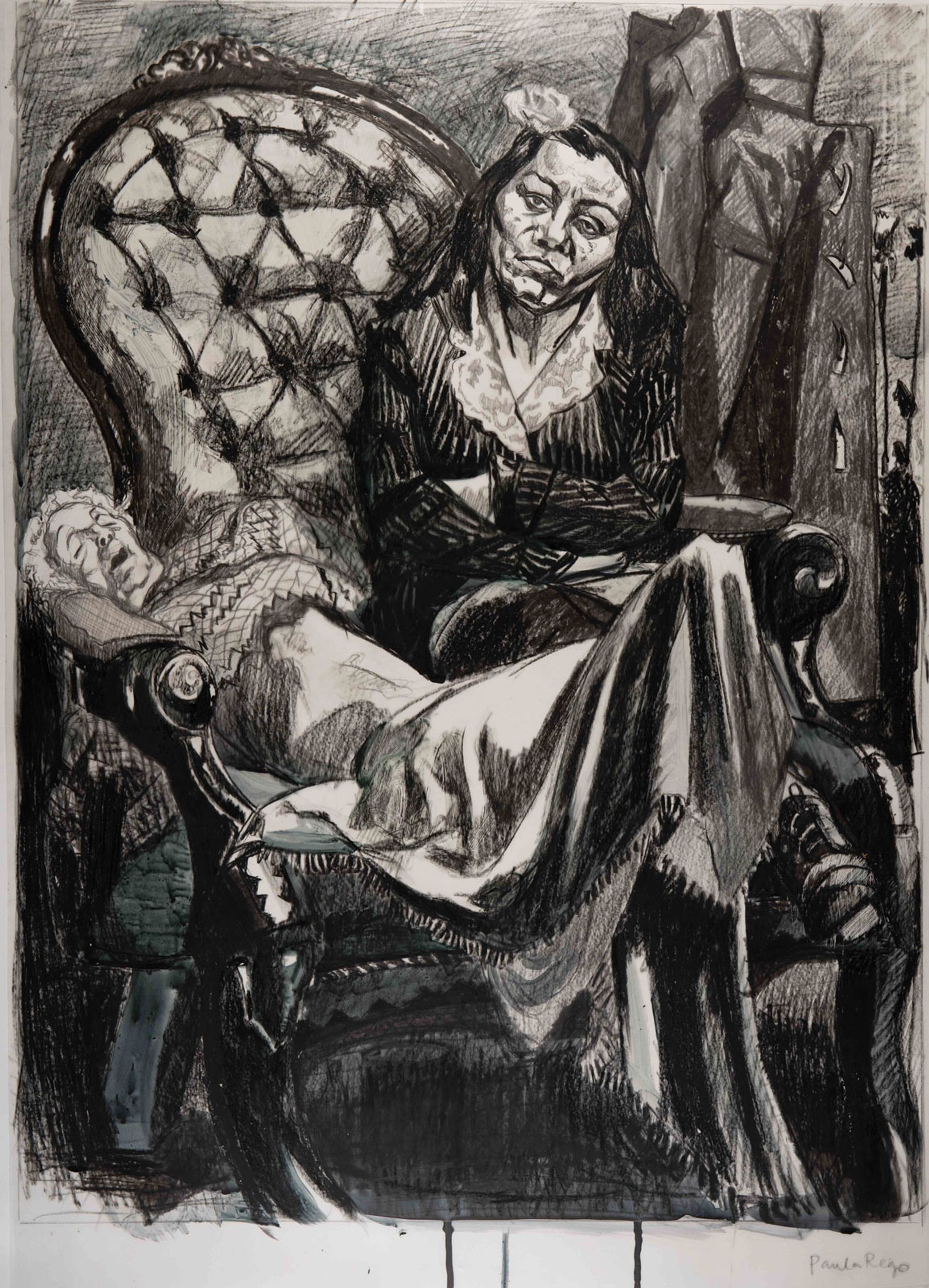
Rego's Nursing (2000) © Paula Rego; Courtesy the artist and Victoria Miro
Tracey Emin: Have you ever felt unappreciated as an artist?
Rego: I’ve felt frustrated and broke. It was an enormous relief whenever I sold a picture.
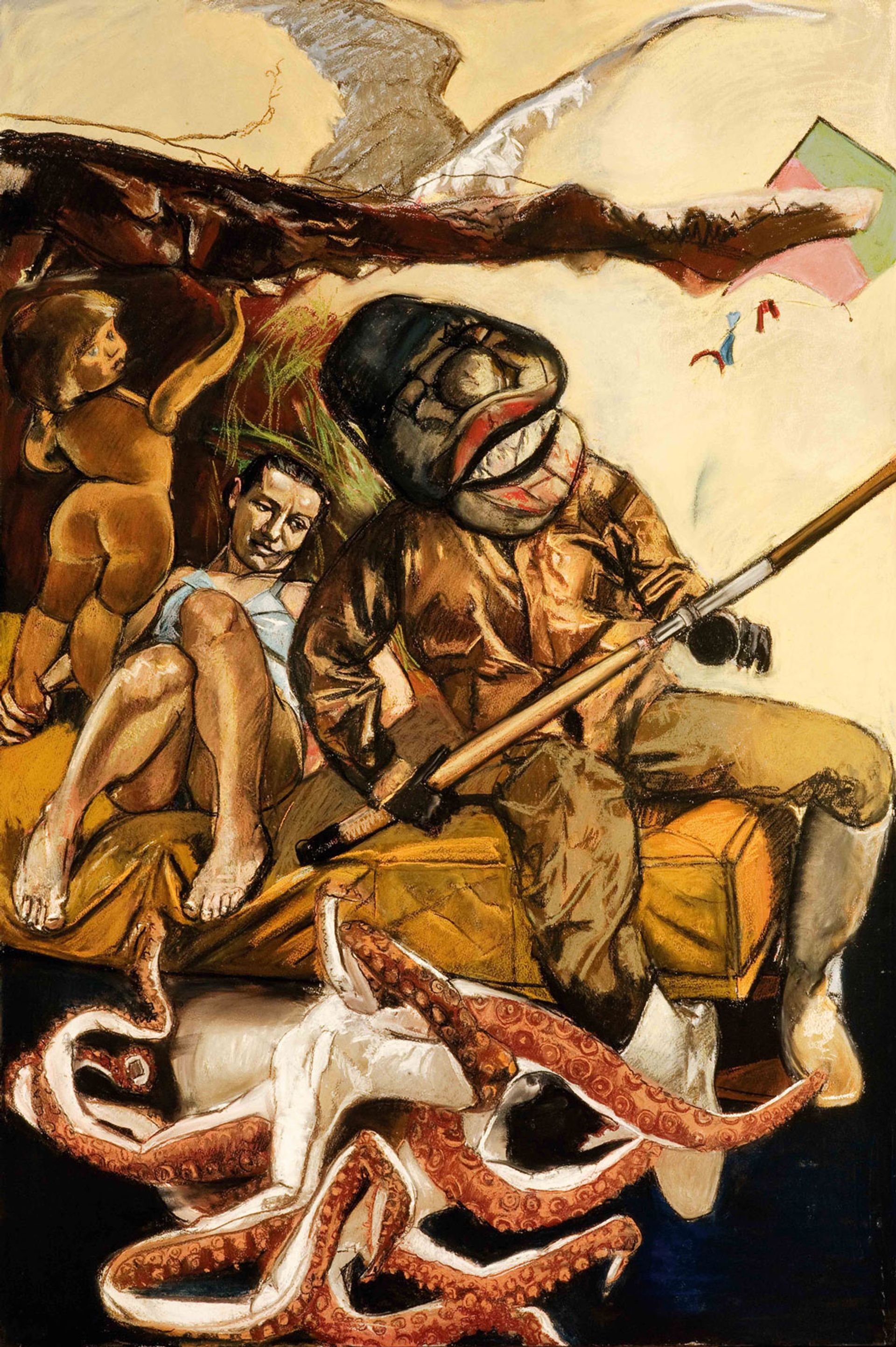
Rego's The Fisherman (2005) © Paula Rego; Courtesy the artist and Victoria Miro
Marlene Dumas: Which of the illustrators of Alice in Wonderland is your favourite? Or, if not applicable, name your favourite book with illustrations.
Rego: [John] Tenniel was very good, and [Arthur] Rackham. But my favourite would be Gustave Doré’s illustrations for Dante’s Inferno.
Dumas: If you were locked up in a prison and could ask for paper and one other medium to use, would it be a paintbrush and a tube of oil paint, or rather a pencil, a piece of charcoal, or some other…?
Rego: It would be an HB pencil.
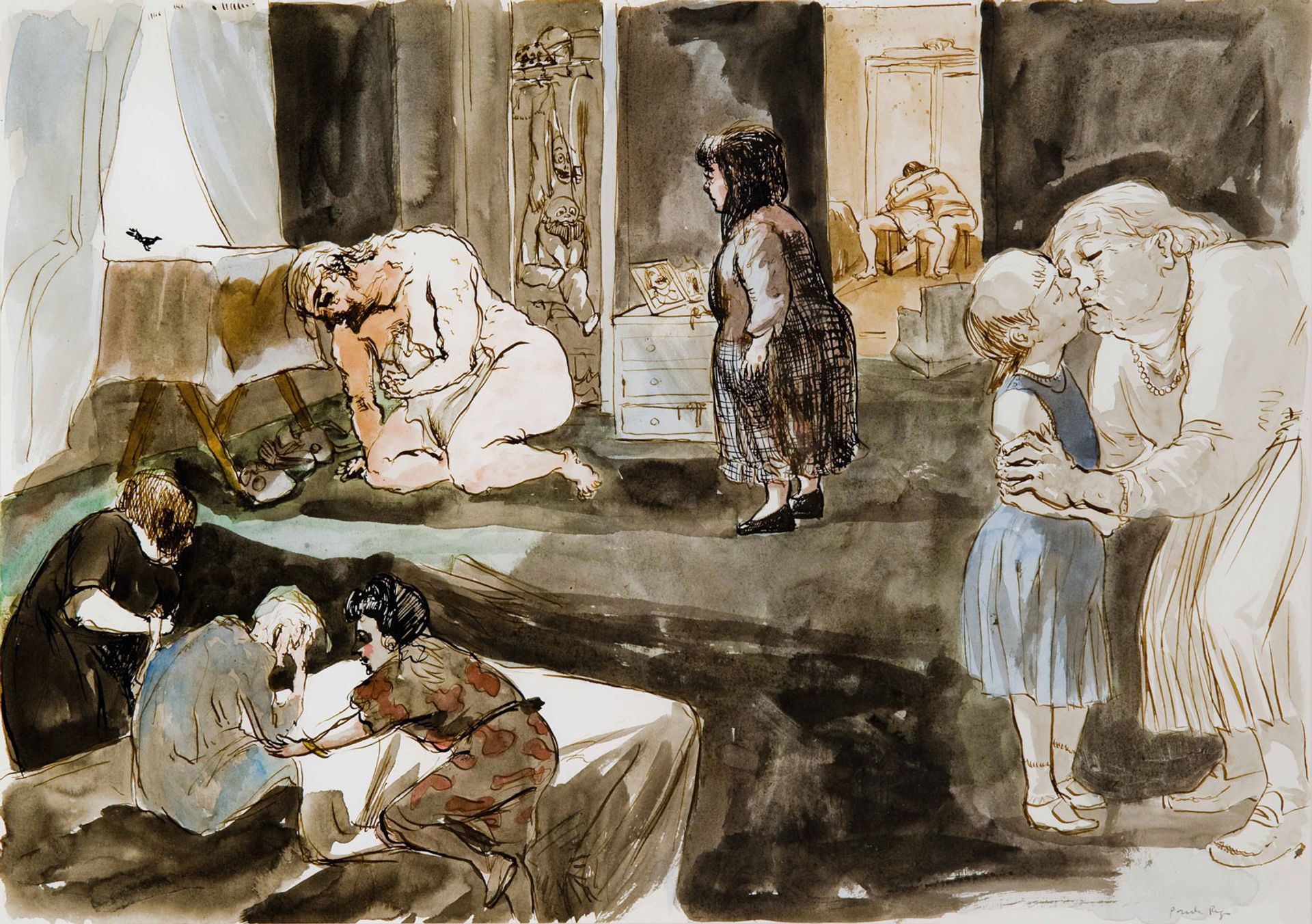
Rego's Misericordia III (2001) © Paula Rego; Courtesy the artist and Victoria Miro
Celia Paul: Why don’t you paint nudes?
Rego: I have done, if the story needs it. Tony was nude in Metamorphosis. Clothes are very useful. They say a lot. They show character and status. Most of life is clothed.
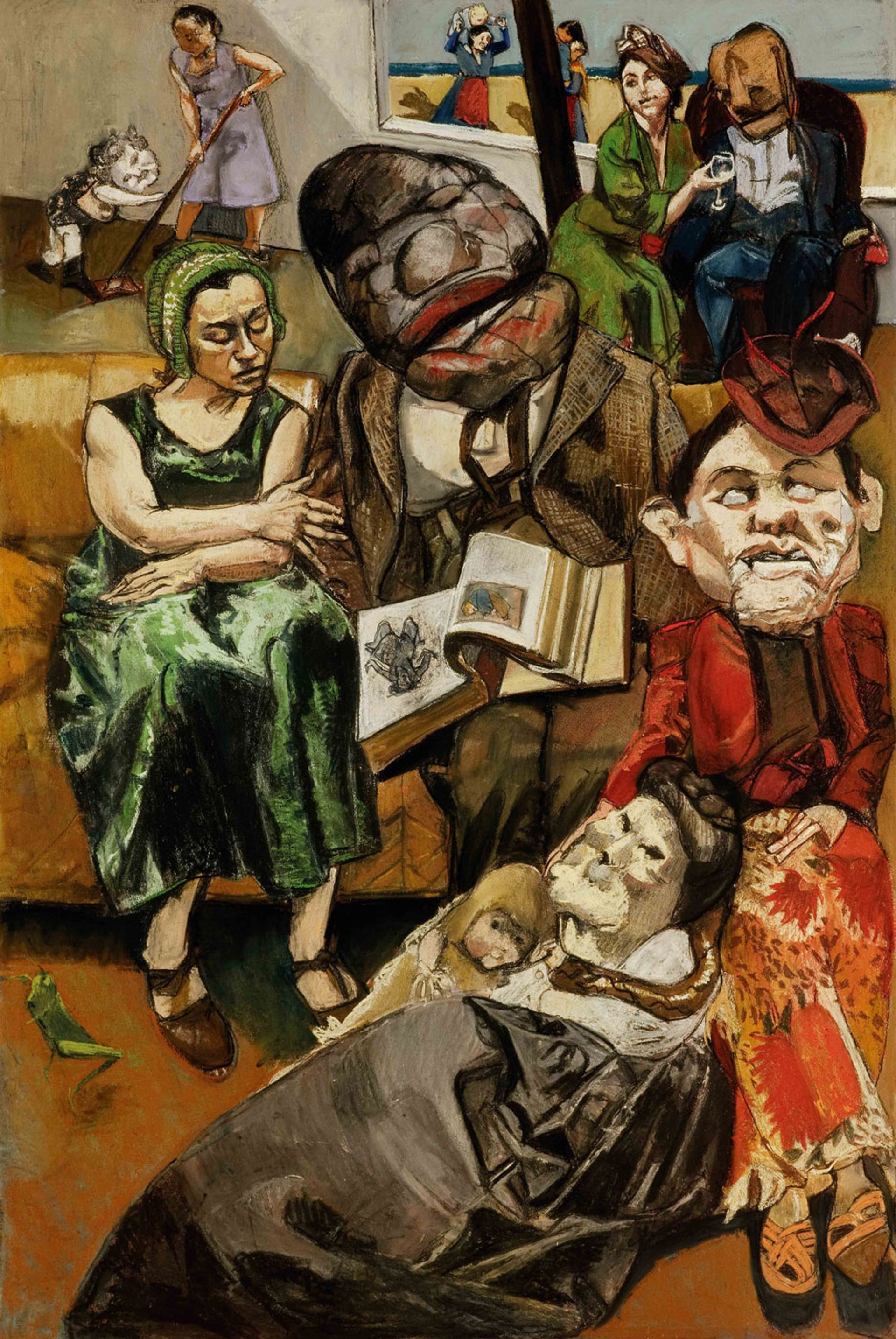
Rego's Reading the Divine Comedy by Dante (2005) © Paula Rego; Courtesy the artist and Victoria Miro
Cecily Brown: Do you smudge the pastel with your fingers or a special tool?
Rego: When I first started using pastels, I loved the hard mark of colour that the pastel gave me, like drawing with colour. I built up layers of colour by mixing the pastels. With no smudging.
Brown: Do you use fixative between layers?
Rego: Yes, you have to be diligent about that.
Brown: My pastels become muddy when I go on too long. Yours are always bright and vibrant. Can you tell me your secret?
Rego: Don’t smudge.
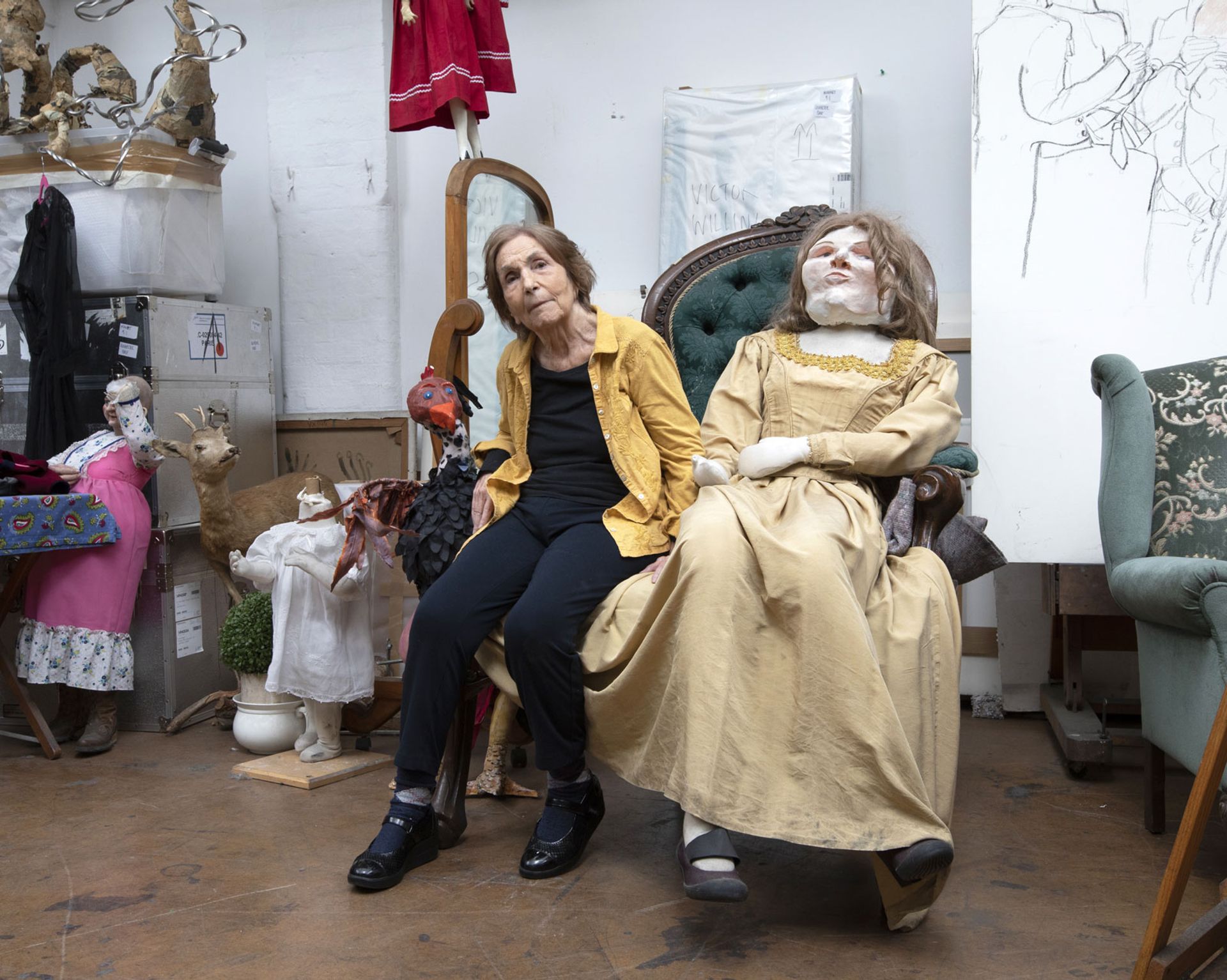
Paula Rego in her London studio last year Photo: © Gautier Deblonde; Courtesy the artist and Victoria Miro
Flora Yukhnovich: I love the dummies in your work, they’re so fantastical and uncanny. Do you make them for a particular picture, or do they exist for their own sake and find their way into your work?
Rego: I usually make them, or have them made, for a particular role in a picture but then they become jobbing actors and get cast in different roles or get used in installations. I become very fond of some, while others creep me out and Lila has to hide them. She made a wonderful cricket for me, but it had a bad feeling I couldn’t use, so she took it away again.
• Paula Rego: The Forgotten, Paula Rego, Deborah Levy, Victoria Miro, 132pp, £65 (hb)


